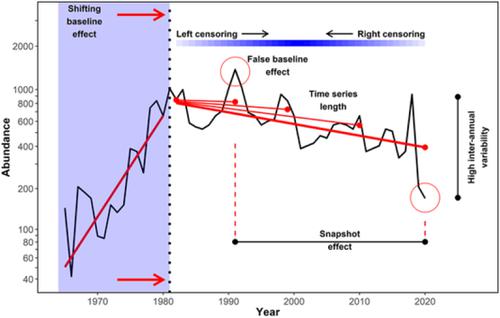当前位置:
X-MOL 学术
›
Insect Conserv. Divers.
›
论文详情
Our official English website, www.x-mol.net, welcomes your
feedback! (Note: you will need to create a separate account there.)
Interpreting insect declines: seven challenges and a way forward
Insect Conservation and Diversity ( IF 3.2 ) Pub Date : 2020-03-04 , DOI: 10.1111/icad.12408 Raphael K. Didham 1, 2 , Yves Basset 3, 4, 5, 6 , C. Matilda Collins 7 , Simon R. Leather 8 , Nick A. Littlewood 9 , Myles H. M. Menz 1, 10, 11, 12 , Jörg Müller 13, 14 , Laurence Packer 15 , Manu E. Saunders 16 , Karsten Schönrogge 17 , Alan J. A. Stewart 18 , Stephen P. Yanoviak 3, 19 , Christopher Hassall 20
中文翻译:

解释昆虫的降落:七个挑战和前进的方向
更新日期:2020-03-04
Insect Conservation and Diversity ( IF 3.2 ) Pub Date : 2020-03-04 , DOI: 10.1111/icad.12408 Raphael K. Didham 1, 2 , Yves Basset 3, 4, 5, 6 , C. Matilda Collins 7 , Simon R. Leather 8 , Nick A. Littlewood 9 , Myles H. M. Menz 1, 10, 11, 12 , Jörg Müller 13, 14 , Laurence Packer 15 , Manu E. Saunders 16 , Karsten Schönrogge 17 , Alan J. A. Stewart 18 , Stephen P. Yanoviak 3, 19 , Christopher Hassall 20
Affiliation

|
- Many insect species are under threat from the anthropogenic drivers of global change. There have been numerous well‐documented examples of insect population declines and extinctions in the scientific literature, but recent weaker studies making extreme claims of a global crisis have drawn widespread media coverage and brought unprecedented public attention. This spotlight might be a double‐edged sword if the veracity of alarmist insect decline statements do not stand up to close scrutiny.
- We identify seven key challenges in drawing robust inference about insect population declines: establishment of the historical baseline, representativeness of site selection, robustness of time series trend estimation, mitigation of detection bias effects, and ability to account for potential artefacts of density dependence, phenological shifts and scale‐dependence in extrapolation from sample abundance to population‐level inference.
- Insect population fluctuations are complex. Greater care is needed when evaluating evidence for population trends and in identifying drivers of those trends. We present guidelines for best‐practise approaches that avoid methodological errors, mitigate potential biases and produce more robust analyses of time series trends.
- Despite many existing challenges and pitfalls, we present a forward‐looking prospectus for the future of insect population monitoring, highlighting opportunities for more creative exploitation of existing baseline data, technological advances in sampling and novel computational approaches. Entomologists cannot tackle these challenges alone, and it is only through collaboration with citizen scientists, other research scientists in many disciplines, and data analysts that the next generation of researchers will bridge the gap between little bugs and big data.
中文翻译:

解释昆虫的降落:七个挑战和前进的方向
- 许多昆虫物种正受到全球变化的人为驱动因素的威胁。在科学文献中,有许多文献充分记录了昆虫种群减少和灭绝的例子,但是最近的研究较弱,对全球危机的极端宣称,已经引起了媒体的广泛报道,并引起了前所未有的公众关注。如果警惕性昆虫拒绝发表声明的准确性不能经受严格的审查,那么这个聚光灯可能是一把双刃剑。
- 在确定有关昆虫种群数量下降的可靠推断时,我们确定了七个主要挑战:建立历史基线,站点选择的代表性,时间序列趋势估计的鲁棒性,减轻检测偏差的影响以及解释密度依赖性潜在假象的能力,物候从样本丰度到总体水平推断的外推变化和规模依赖性。
- 昆虫种群的波动是复杂的。在评估人口趋势的证据并确定这些趋势的驱动因素时,需要格外小心。我们提供了最佳实践方法的指南,这些方法可避免方法错误,减轻潜在偏见并针对时间序列趋势进行更可靠的分析。
- 尽管存在许多现存的挑战和陷阱,我们还是对昆虫种群监测的未来提出了前瞻性的招股说明书,重点介绍了对现有基准数据进行更富创造性的开发,采样技术的进步和新颖的计算方法的机会。昆虫学家不能独自应对这些挑战,只有通过与公民科学家,许多学科的其他研究科学家以及数据分析人员合作,下一代研究人员才能弥合小错误和大数据之间的鸿沟。











































 京公网安备 11010802027423号
京公网安备 11010802027423号